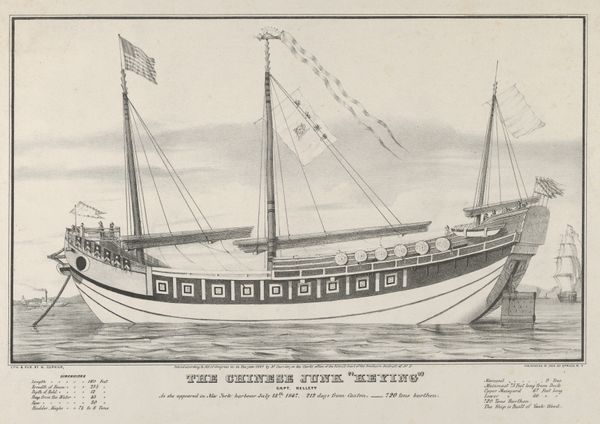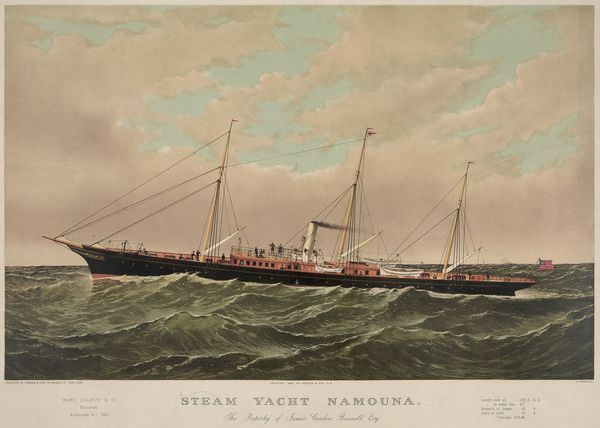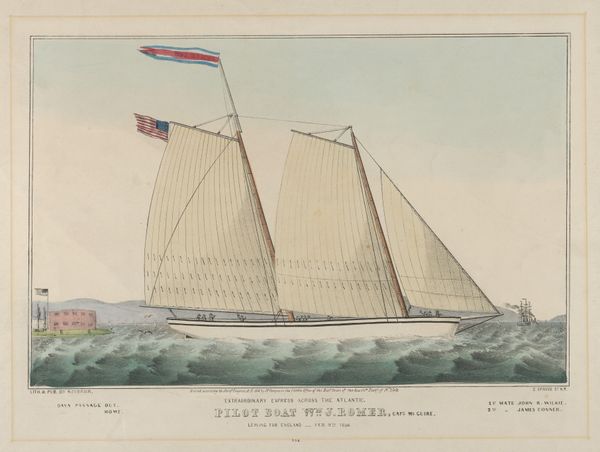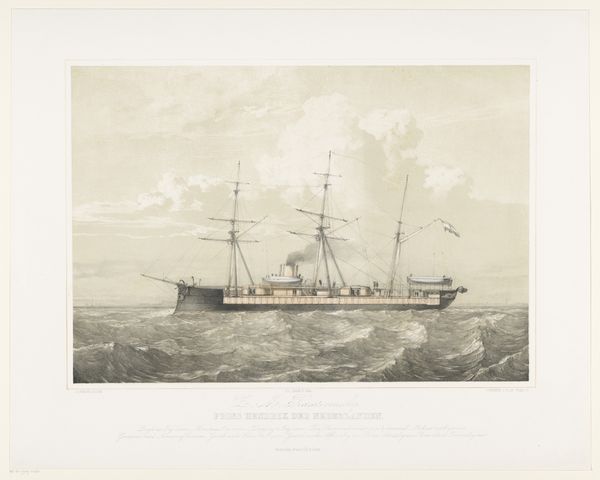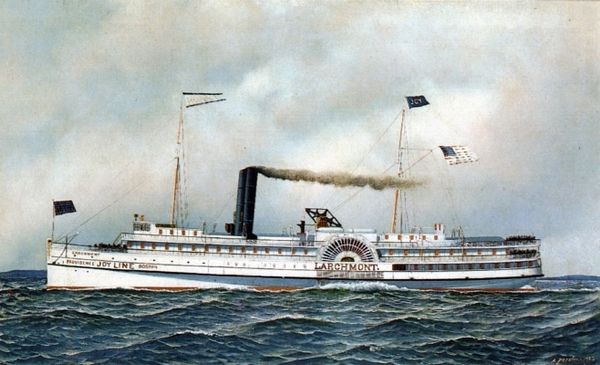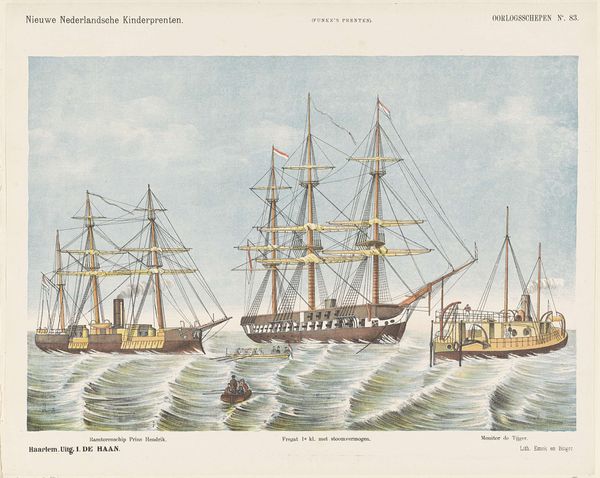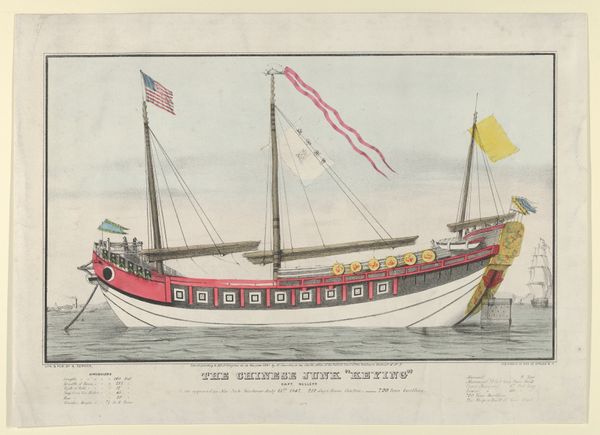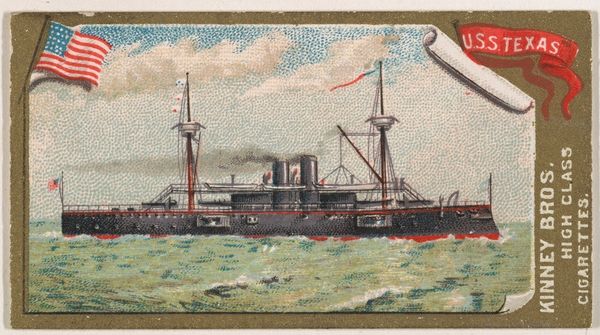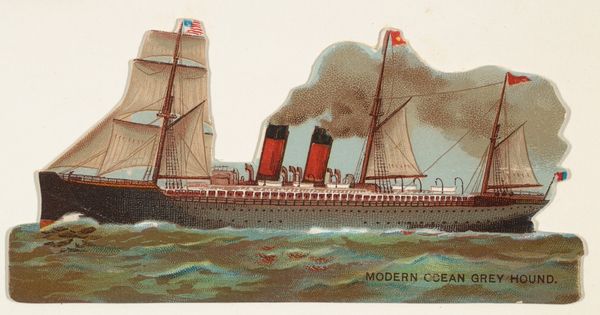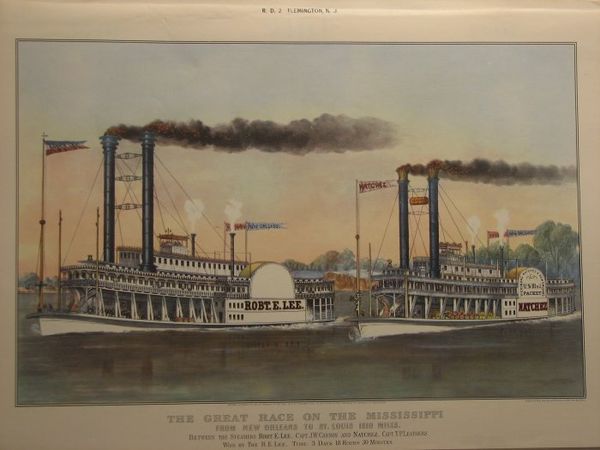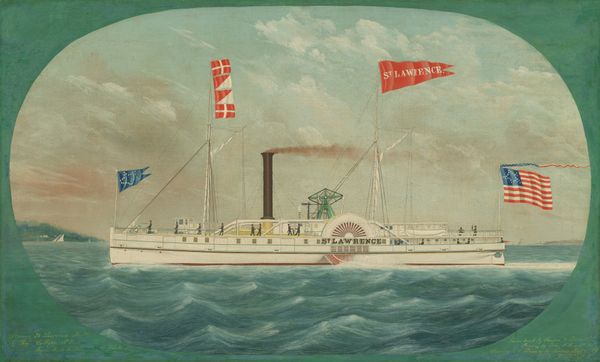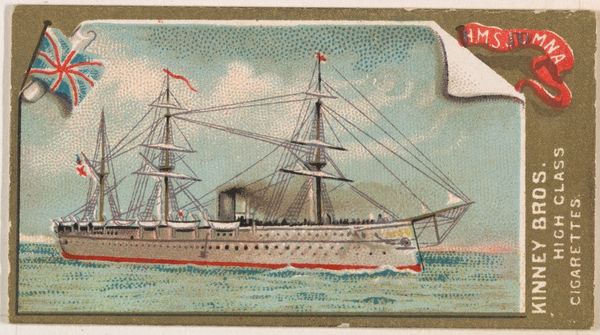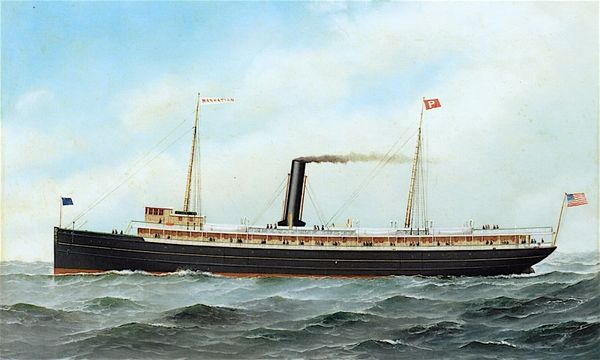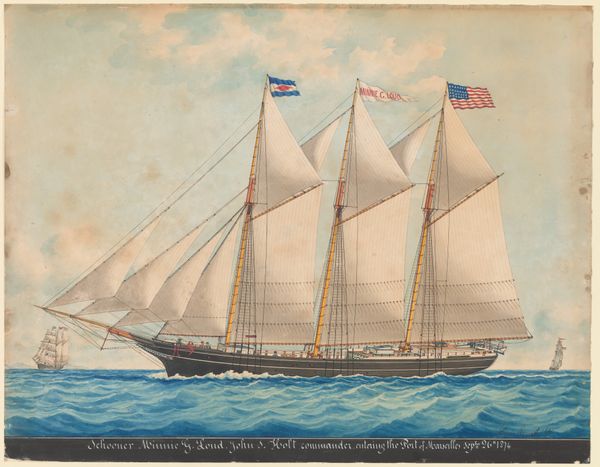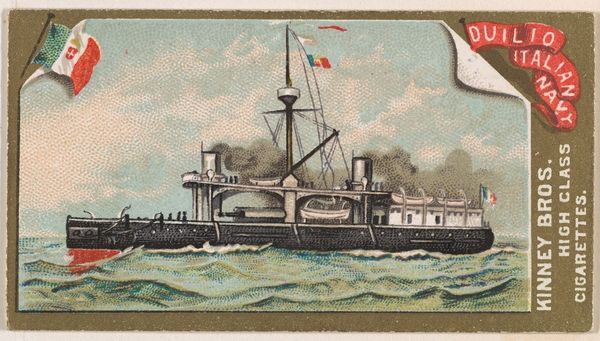
Copyright: Public domain
Curator: Here we have an 1883 watercolor print from Currier and Ives entitled, "Penobscot, New England coastal steamship". It depicts the steamer Penobscot cutting its way through some pretty dramatic waves. What strikes you initially? Editor: That enormous paddle wheel, for starters! It dominates the scene, an intricate and almost delicate mechanism powering this beast of a steamship. There's a fascinating tension between the industrial and the picturesque at play here, don’t you think? The billowing smoke, too. You can almost smell the coal burning. Curator: Precisely. Currier and Ives were masters at romanticizing industry and westward expansion. While trained as fine artists they moved into a more lucrative space, bringing art to a broader middle class audience. They transformed these symbols of industrial might into something almost aspirational, imbued with a sense of adventure and progress, selling the dream more than the grit, let's say. Editor: Well, looking closely at those waves, one can tell this isn't simply a neutral record of maritime transportation. There’s certainly artistry there. The swells feel quite exaggerated, contributing to a real sense of motion and perhaps even peril. Consider also the material context, printmaking democratizing images to an audience keen to celebrate progress, making industry consumable at a domestic scale. Who made this print exactly, do we know? Curator: The names "Currier and Ives" signify a collaborative brand more than the hands of particular artists in this era. Though many different artists were employed to make artworks under these names, the focus was very much on consistency and ease of mass production, prioritizing market demands over specific artistic voices. Editor: A very good point. And in their time, I'm sure their works served as functional decorations, inexpensive glimpses into a larger world for a nation undergoing immense change. It seems so removed from how we understand or engage with such prints now. It asks us what we do with industry today in this digital production world. Curator: It does, indeed. It highlights that fascinating tension between the machine-made and the handcrafted. It allows us to appreciate how art continually redefines its relationship to production. I've rather changed my thinking about this piece... Editor: Me too. I began purely captivated by this maritime titan, but it becomes increasingly unsettling to view the painting just as it is, especially when understanding how many individual processes it took to get here.
Comments
No comments
Be the first to comment and join the conversation on the ultimate creative platform.
